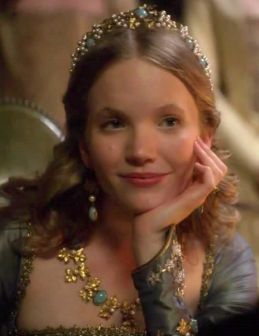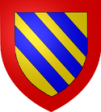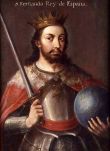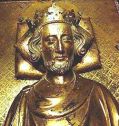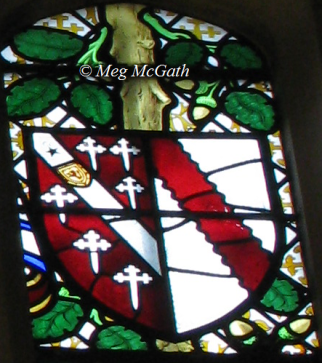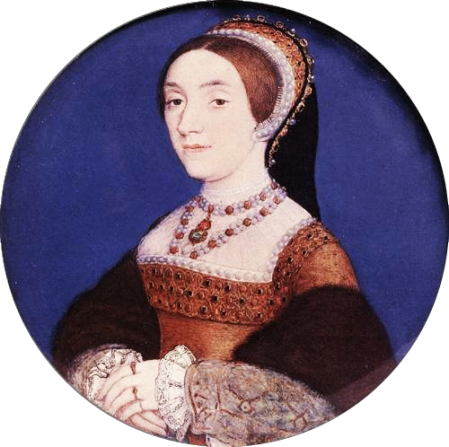Katherine Howard's
Ancestors
Click EasyEdit to add/edit this page (Don't see the EasyEdit button above? <a href="../#signin" target="_self">Sign in</a> or <a href="../accountnew" target="_self">Sign up</a>.) | | The House of Howard (or the House of FitzAlan Howard) is a noble house founded by John Howard who was created Duke of Norfolk by Plantagenet monarch Richard III of England. The Howard's have been part of the nobility since the 15th century and are to this day Premier Dukes of the Realm in the peerage of England, acting as Earl Marshal of England. Throughout the English Reformation the Howard's remained steadfast in their Catholic faith as the most high profile recusant family; two members, Philip Howard, 20th Earl of Arundel and William Howard, 1st Viscount Stafford are regarded as martyrs, a saint and a blessed respectively. The senior line of the house, as well as holding the Dukedom of Norfolk, are also Earl of Arundel, Earl of Surrey, and Earl of Norfolk, as well as holding six baronies. The Arundel title was inherited in 1580, when the Howards became the genealogical successors to the paternally extinct FitzAlans, ancient kin to the Stuarts, dating back to when the family first arrived in Great Britain from Brittany. There have also been several notable cadet branches; those existing to this day include the Howards of Effingham, Howards of Carlisle, Howards of Suffolk and Howards of Penrith. The former three are all holders of earldoms. Throughout much of English and later British history, the Howards have played an important role. Claiming descent from folklore figure Hereward the Wake who resisted the Norman conquest, John Howard fought to the death at the Battle of Bosworth Field in defence of the Yorkist cause. They regained favour with the new Tudor dynasty after leading a defence of England from Scottish invasion at the Battle of Flodden Field and Katherine Howard subsequently became the fifth wife of Henry VIII. While Thomas Howard, 3rd Duke of Norfolk played a significant role in securing the throne for Mary I, later a statesman from the family; Charles Howard, 1st Earl of Nottingham served as Lord Admiral of the English fleet which defeated the invading Spanish Armada. |
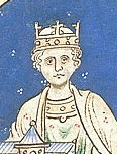
Henry II
King of England
(1133 - 1189)
great-grandson of William the Conqueror, was the first of the House of Plantagenet to rule England. Henry was the first to use the title "King of England" (as opposed to "King of the English")
| 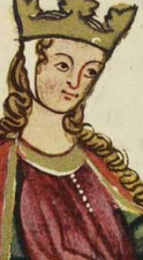
Eleanor of Aquitaine
(1122 - 1201)
ruler in her own right of Aquitaine, Queen Consort in France (First wife of Louis VII pictured right but the marriage was annulled) then England; queen mother in England. |
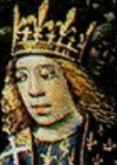
Louis VII
King of France
(1120 - 1180)
the son and successor of Louis VI. He ruled from 1137 until his death. He was a member of the House of Capet. His reign saw the beginning of the long feud between France and England.
|
 Henry II and Eleanor of Aquitaine had 8 children including: Henry II and Eleanor of Aquitaine had 8 children including:
John, King of England and Eleanor, Queen of Castille (pictured right), Katherine Howard had both siblings as ancestors | Louis VII and his 3rd wife Adèle of Champagne were the parents of King Philip II of France who was the father of King Louis VIII, Grandfather of *Blanche de Artois, 2nd wife of Edmund "Crouchback" Plantagenet. (below) |
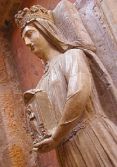
Berengaria
Queen of Castile and Leon
(1180 - 1246)
daughter of Eleanor of England, Queen of Castille
Mother of Ferdinand III and Infanta Berenguela of León, Empress of Constantinople
| 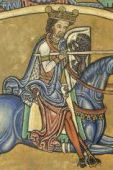
Alfonso IX
King of León and Galicia
(1171 – 1230)
Father of Ferdinand III and Infanta Berenguela of León, Empress of Constantinople
| 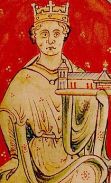
John
King of England
(1167 - 1216)
Father of Henry III and Richard, Earl of Cornwall
(the Howard of Norfolk line descended from an illegitimate child of his,
Sir Richard Cornwall)
| 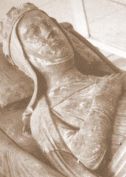
Isabella of Angoulême
suo jure Countess of Angouleme
(1188 - 1246)
Married twice. First to John of England and secondly to Hugh X de Lusignan.
Mother of Henry III and Richard, Earl of Cornwall;
(the Howard of Norfolk line descended from an illegitimate child of his,
Sir Richard Cornwall)
Also Mother of Hugh XI de Lusignan
|
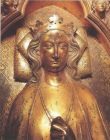
Eleanor of Castile
(1241-1290)
1st Wife of
Edward I
Daughter of Ferdinand III King of Castile, Galicia & León.
Edward married Eleanor on October 18, 1254; at the Abbey of Las Huelgas, Burgos, Castile (Spain). She was dark haired and beautiful and they had 16 children, of which 7 survived into adulthood. Eleanor was buried in Westminster Abbey in London. To show his love for his departed wife, Edward erected 12 crosses along the route of her funeral procession from Lincoln to Westminster.
Mother of Lady Elizabeth and Joan of Acre
| 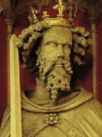
Edward I
King of England
(1239 - 1307)
Edward I was a tall man of six feet two inches (1.88m), with long arms and legs from which his nick-name, "Longshanks", was derived. His hair was black like his Provencal mother's, his complexion swarthy and his eyes fiery in anger. Edward spoke with a pronounced lisp, but possessed the Plantagenet temper in full measure.
Father of Lady Elizabeth Plantagenet, Joan of Acre,
and
Thomas of Brotherton
*Katherine is descended from both half-siblings and their cousin Henry Plantagenet | 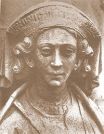
Margaret of France
(c.1279 – 1318)
2nd Wife of
Edward I
Daughter of Phillip III, King of France and Maria of Brabant. The King remarried at the age of 60, his second wife was 17. They had 3 children, Thomas of Brotherton, Edmund and daughter, named Eleanor for the king's first wife. Despite their disparate ages the pair grew extremely close and Eleanor built up a close relationship with Edward's heir, his eldest surviving son by his first marriage, Edward, Prince of Wales (later Edward II) who was but two years younger than herself.
Mother of Thomas of Brotherton
| 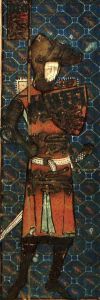
Edmund "Crouchback"
Plantagenet
(1245 - 1296
1st Earl of Lancaster
Younger Brother of King Edward I
Gained the title of
King Edmund of Sicily on 7 January 1254 and abdicated in 1263. It is believed his nickname is derived from "crossback" due to his participation in the Crusades. As a result of his marriage, Edmund was styled as Comte de Brie and Comte de Champagne in 1276
Father of Henry Plantagenet
| 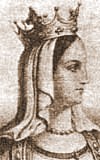
Blanche de Artois
(1248 -1302)
2nd wife of
Edmund "Crouchback" Plantagenet
Her paternal grandparents were King Louis VIII of France and Blanch of Castile. Her maternal grandparents were Henry II, Duke of Brabant and Marie of Hohenstaufen, daughter of Philip of Swabia.
She had previously married to King Henry of Navarre and had ruled after his death in 1274, as Queen Regent of Navarre in right of their daughter, Joan of Navarre
Mother of Henry Plantagenet
|
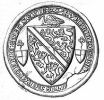
Humphrey de Bohun,
4th Earl of Hereford
(1276 - 1321/22)
From an important Norman family of the Welsh Marches and was considered one of the most remarkable men of his time.
Father of William de Bohun
| 
Elizabeth of Rhuddlan
(1282 - 1316)
She had eleven children, three died as infants. Of the remaining eight, five married
Mother of William de Bohun
| 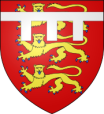
Thomas of Brotherton, 1st Earl of Norfolk
(1300 – 1338)
Lord Marshal of England
Father of Margaret of Brotherton
| 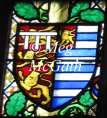
Alice Hayles
died in 1330
daughter of
Sir Roger Hayles, Coroner of Norfolk and Alice Skogan
She had a reputation for being a great beauty
She had three children: Edward, Margaret, and Alice.
Mother of Margaret of Brotherton
| 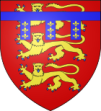
Henry Plantagenet
3rd Earl of Lancaster and Leicester
(1281 - 1345)
Father of Joan of Lancaster and Lady Eleanor of Lancaster
| 
Maud Chaworth
(1282 -1322)
Wealthy Heiress of Sir Patrick de Chaworth, Baron of Kidwelly and Isabella de Beauchamp
Mother of Joan of Lancaster and Lady Eleanor of Lancaster
|
|
| 
Joan of Acre,
Countess of Hertford
Princess of England
(c. 1272 - 23 April 1307)
Daughter of Edward I and Eleanor of Castile
Mother of Lady Elizabeth de Clare | 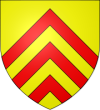 Gilbert de Clare, Gilbert de Clare,
Earl of Gloucester
(2 September 1243 – 7 December 1295)
who was a powerful English noble.
Father of Lady Elizabeth de Clare |
|
|
William de Bohun
1st Earl of Northampton
KG (ca. 1312-1360)
Father of Elizabeth de Bohun | Elizabeth de Badlesmere,
(1313 – 8 June 1356)
Daughter of Sir Bartholomew de Badlesmere, 1st Baron and Margaret de Clare
Mother of Elizabeth de Bohun
| Lord John de Segrave,
4th Baron Segrave
Father of Elizabeth
Segrave
| Lady Margaret of Brotherton Plantagenet,
1st Duchess of Norfolk
2nd Countess of Norfolk
Lady Marshal
(c. 1320 – 1399)
suo jure Duchess/Countess of Norfolk
Mother of Elizabeth Segrave
|
Lady Joan of Lancaster
Plantagenet,
Baroness Mowbray
(c. 1312 – 7 July 1345)
Mother of John de Mowbray
| John de Mowbray,
3rd Baron Mowbray
(c. 1310 - 1361)
Father of John de Mowbray
| Lady Eleanor of
Lancaster Plantagenet,
Countess of Arundel
11 September 1318 – 11 January 1372)
Mother of Sir Richard Fitzalan, 11th Earl | Sir Richard Fitzalan,
10th Earl of Arundel
(c. 1306 – 24 January 1376)
son of Sir Edmund, 9th Earl of Arundel and Alice de Warenne, heir apparent to the Earldom of Surrey.
Father of Sir Richard Fitzalan, 11th Earl |
| Lady Elizabeth de Clare
Baroness Verdun of Damory
(c. 1295 - 1360)
Mother of Isabel Verdun | Sir Theobald de Verdun,
2nd Lord Verdun of Damory
(c. 1278 - 1316)
Father of Isabel Verdun |
|
John de Mowbray,
4th Baron Mowbray
(1340 – 1368)
Father of Thomas de Mowbray
| Elizabeth Segrave,
Baroness Mowbray
suo jure 5th Baroness Segrave
(d. 1375)
Mother of Thomas de Mowbray | Elizabeth de Bohun
Countess of Arundel
(c. 1350 – 3 April 1385)
Mother of Lady Elizabeth Fitzalan | Sir Richard Fitzalan,
11th Earl of Arundel
(c. 1346 - 1397)
Father of Lady Elizabeth Fitzalan
| Thomas de Mowbray,
1st Duke of Norfolk
(first creation), (1366 – 1399)
Father of Margaret Mowbray
| Lady Elizabeth FitzAlan
(1366 - 1425)
Mother of Margaret Mowbray | Isabel de Verdun,
Baroness Ferrers of Groby
Mother of William Ferrers, 3rd Baron | Henry de Ferrers
2nd Baron Ferrers of Groby
(c.1303 - 1343)
Father of William Ferrers, 3rd Baron |
|
|
|
|
|
| William Ferrers,
3rd Baron Ferrers of Groby
(c. 1332 - 1371)
Father of Henry Ferrers, 4th Baron
(See Sir William Ferrers, 5th Baron) | Margaret de Ufford
(1330 - 1368)
daughter of Robert D'Ufford, 1st Earl of Suffolk and Margaret Norwich.
Mother of Henry Ferrers, 4th Baron (See Sir William Ferrers, 5th Baron) |
| Katherine's great great grandparents |
Sir Robert Howard
(c. 1384 - 1437)
son of Sir John Howard,
Sheriff of Hertford and Alice Tendring
Father of John Howard
| Lady Margaret Mowbray,
Duchess of Norfolk
(c. 1387 - 8 July 1425)
Mother of John Howard | Sir Philip Tylney
(c. 1437 - 1453)
Son of Frederick Tylney and Margaret Rochford
Father of Frederick Tylney
| Isabel Thorpe
(? - 1436)
Daughter of Sir Edmund Thorpe, 5th Lord Thorpe of Ashwell-thorpe and Joan de Northwood
Mother of Frederick Tylney
| Sir John Culpeper
of Oxen Hoath
(c. 1366 - 1414)
Father of William Culpeper
| Catherine Charles
(c. 1370 - aft 1424)
Daughter of Richard Charles and Alice (?)
Mother of William Culpeper
| Richard Worsley
(c. 1461 - ?)
Father of Otwell Worsley
| Catherine Clark
(c. 1461 - ?)
Mother of Otwell Worsley
|
| Sir William Ferrers,
5th Baron of Groby
(1372 - 1445)
Son of
Henry Ferrers,
4th Baron of Groby
and
Joan de Poynings
Father of Elizabeth Ferrers | Philippa Clifford
(c. 1372 - 1441)
Daughter of
Roger Clifford,
5th Baron
and
Lady Maud Beauchamp
Mother of Elizabeth Ferrers |
|
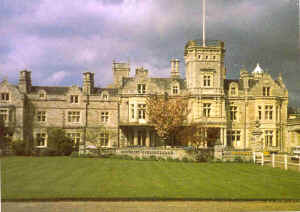 The Colepepers/Culpepers were of a very ancient Kentish family. Apparently the first Culpeper to own Preston Hall was Sir Thomas Culpeper of Bayhall in Pembury, who was Sheriff of Kent during the reign of Edward I (1272-1307). Sir John of Oxen Hoath (Katherine's great-great-grandfather), was a justice of the Common Pleas in 1406-9. Sir John died in 1414 and by his wife Katherine he left a son, Sir William, who was Sheriff of Kent in 1427. Sir William died in 1457 (date of death disputed and ranges from 1417 to 1457) and was interred in West Peckham church. Sir William had three sons, Sir Richard, William and Geoffrey. Sir Richard inherited the estate. He had three daughters by Isabel Worsley. The second daughter, Joyce, married Lord Edmund Howard (died 1539) and became the mother of Queen Katherine Howard, the fifth wife of Henry VIII. In 1484, the estate passed to Sir Richard's younger brother William, whose son and heir in 1502 was Edward. Edward was interred in 1533 in the chancel at Aylesford near to his mother Margaret. Edward's son and heir was John, who had a son Thomas. On the accession of Queen Mary in July 1553, Thomas joined the rebellion with Sir Thomas Wyatt the Younger. Consequently, the estate of Preston was presented to Mr. Cartwright, the Deputy Sheriff. Thomas Culpeper was confined in the Tower of London. He had a fellow prisoner in Thomas Vane, who had married Thomas's cousin Elizabeth Culpeper. They appeared to have been Protestant martyrs, as suggested by their inscription on the stonewall of their cell: The Colepepers/Culpepers were of a very ancient Kentish family. Apparently the first Culpeper to own Preston Hall was Sir Thomas Culpeper of Bayhall in Pembury, who was Sheriff of Kent during the reign of Edward I (1272-1307). Sir John of Oxen Hoath (Katherine's great-great-grandfather), was a justice of the Common Pleas in 1406-9. Sir John died in 1414 and by his wife Katherine he left a son, Sir William, who was Sheriff of Kent in 1427. Sir William died in 1457 (date of death disputed and ranges from 1417 to 1457) and was interred in West Peckham church. Sir William had three sons, Sir Richard, William and Geoffrey. Sir Richard inherited the estate. He had three daughters by Isabel Worsley. The second daughter, Joyce, married Lord Edmund Howard (died 1539) and became the mother of Queen Katherine Howard, the fifth wife of Henry VIII. In 1484, the estate passed to Sir Richard's younger brother William, whose son and heir in 1502 was Edward. Edward was interred in 1533 in the chancel at Aylesford near to his mother Margaret. Edward's son and heir was John, who had a son Thomas. On the accession of Queen Mary in July 1553, Thomas joined the rebellion with Sir Thomas Wyatt the Younger. Consequently, the estate of Preston was presented to Mr. Cartwright, the Deputy Sheriff. Thomas Culpeper was confined in the Tower of London. He had a fellow prisoner in Thomas Vane, who had married Thomas's cousin Elizabeth Culpeper. They appeared to have been Protestant martyrs, as suggested by their inscription on the stonewall of their cell: 'Be thou faithful to the end and I will give you a crown of eternal life – 1554, T Fane, T. Culpeper, of Ailsford, Kent.' (from Revelation 2:10.) They were pardoned and Fane lived to become Sir Thomas Fane of Mereworth Castle. The estate of Preston was restored to Thomas Culpeper, who later became a Revenue Commissioner. In 1561 he was Purveyor of Rochester Bridge.The Culpepers, in the reign of Edward III, separated into two branches; one settled at Bay Hall, near Pepenbury, in Kent, from which descended Baron Colepeper, master of the Rolls in the time of Charles I; and the other seated at Preston Hall, near Aylesford, in the same county, to which John Colepeper, the judge, belonged.
His grandfather was Sir Jeffrey Colepeper, who was Sheriff of Kent in 40 Edward III. And his father's name was William. There is no report of his forensic practice before Henry IV. 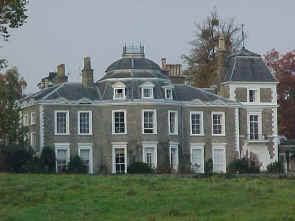 But this arises from the want of the Year Books of the preceding reign. In the fourth year of that reign he was appointed a king's Serjeant, and was one of that degree who advanced £100 each on loan to the king. On June 7, 1406, 7 Henry IV, he was raised to the bench as a judge of the Common Pleas; and continuing in that court during the remainder of the reign, he received a new patent on the accession of Henry V. His death occurred towards the end of the following year, no fines having been levied before him after the month of July, 1414. He was buried in the church of West Peckham, which manor, together with those of Oxenhoath and of Swanton Court, he gave to the Knights Hospitallers of St. John of Jerusalem. But this arises from the want of the Year Books of the preceding reign. In the fourth year of that reign he was appointed a king's Serjeant, and was one of that degree who advanced £100 each on loan to the king. On June 7, 1406, 7 Henry IV, he was raised to the bench as a judge of the Common Pleas; and continuing in that court during the remainder of the reign, he received a new patent on the accession of Henry V. His death occurred towards the end of the following year, no fines having been levied before him after the month of July, 1414. He was buried in the church of West Peckham, which manor, together with those of Oxenhoath and of Swanton Court, he gave to the Knights Hospitallers of St. John of Jerusalem.
By his wife Catherine he left a son, William, who was Sheriff of Kent in 5 Henry VI. To his lineal descendant a baronetcy (that of Preston Hall) was granted in 1627, which became extinct in 1723.
There was also another baronetcy (that of Wakehurst, in Sussex) granted in 1628 to the other branch of the family, which also became extinct in 1740. |
| Katherine's great grandparents |
John Howard, (1421 – 1485)
1st Duke of Norfolk
12th Baron Seagrave
11th Baron Mowbray
Earl Marshall
Father of Thomas
Howard
| Katherine de Moleyns
(died 1465) daughter of Sir William of Hungerford, Lord Moleyns and Marjery Whales-borough
Mother of Thomas Howard
| Sir Frederick Tylney,
Knight
Father of Elizabeth Tylney | Elizabeth Cheney daughter and co-heiress of Lawrence Cheney, Esquire
and Elizabeth Cockayne
Mother of Elizabeth Tylney
| Sir William Culpeper
of Preston Hall, Knight
Sheriff of Kent
(c. 1387 - 20 Jul 1457)
Father of Sir Richard Culpeper | Elizabeth Ferrers
of Groby
(c. 1392 - 1460)
The Ferrers arms are impaled on the Culpepper ones at the tomb of William Culpepper and Elizabeth Ferrers.
Mother of Sir Richard Culpeper
| Otwell Worsley
of Stamworth
(c. 1430 - ?)
Father of Isabel Worsley
| Rose Trevor
(c. 1432 - ?)
Daughter of Edward Trevor and Angharad Puleston
Mother of Isabel Worsley
|
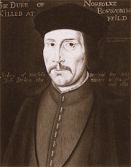 John Howard was the son of Sir Robert Howard (1385–1436) and the former Lady Margaret de Mowbray. He was known as "Jack (or "Jock", hence "Jockey") of Norfolk", and he was described as being a "man of average height, with a strong, square face". The Howards were staunch adherents of the House of York during the Wars of the Roses, and John Howard, backed by his powerful Mowbray relations, upheld the Yorkist cause in Norfolk. After demonstrating his military prowess on the field during the Battle of Towton, John Howard was the son of Sir Robert Howard (1385–1436) and the former Lady Margaret de Mowbray. He was known as "Jack (or "Jock", hence "Jockey") of Norfolk", and he was described as being a "man of average height, with a strong, square face". The Howards were staunch adherents of the House of York during the Wars of the Roses, and John Howard, backed by his powerful Mowbray relations, upheld the Yorkist cause in Norfolk. After demonstrating his military prowess on the field during the Battle of Towton, 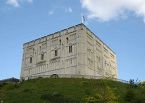 he won the admiration of Edward IV of England who made him Constable of Norwich Castle, Sheriff of Norfolk and Suffolk, and Treasurer of the Royal Household. he won the admiration of Edward IV of England who made him Constable of Norwich Castle, Sheriff of Norfolk and Suffolk, and Treasurer of the Royal Household.
He was summoned to Parliament as Lord Howard on 15 October 1470. He was appointed Lord High Steward and walked in front of King Richard III of England, carrying the crown at his coronation. His eldest son, Thomas, Earl of Surrey carried the sword of state. 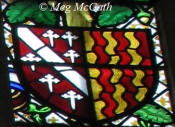
For his support of King Richard III during the deposition of King Edward V in 1483, he was created Duke of Norfolk (of the third creation) on 28 June 1483. The first creation of the Dukedom of Norfolk had become extinct on the death of the 4th Duke in 1476, and the second creation had been invalidated by the illegitimization of the 1st Duke of York (one of the Princes in the Tower, who was also 1st Duke of Norfolk) on 25 June 1483. Norfolk was also created Earl Marshal, and Lord Admiral of all England, Ireland, and Aquitaine.
|
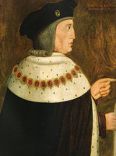
Thomas Howard
(1443 – 1524)
2nd Duke of Norfolk,
1st Earl of Surrey,
13th Baron Segrave,
12th Baron Mowbray
Fought for Richard III at the Battle of Bosworth Field in 1485 where he was wounded and his father killed; following this he was imprisoned in the Tower of London for several years before having some titles and estates restored. Under his command the English crushed the Scots at the Battle of Flodden Field. Lord Surrey and with victory, was restored to his father's title of Duke of Norfolk in 1514, which title had been forfeit since 1485 because of his father's support of Richard.
Thomas married twice. First to Elizabeth Tylney, widow of Sir Humphrey Bourchier, on 30 April 1472, by whom he had nine children including the mother of Anne Boleyn, Lady Elizabeth Howard and Thomas Howard, 3rd Duke of Norfolk. His second marriage was to Agnes Tylney on 17 August 1497, by whom he had eight more children. It was with this Agnes that Katherine spent most of her time with, growing up in her household with other aristocratic children that were orphaned at an early age.
Father of Lord Edmund Howard
| 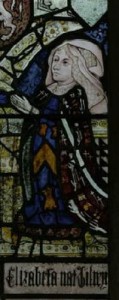
Elizabeth Tylney,
Countess of Surrey
(c. 1445 – 1497)
Elizabeth was as an English heiress, courtier, and the first wife of Thomas Howard, 2nd Duke of Norfolk. She was the mother of Thomas Howard, 3rd Duke of Norfolk. Through her daughter Elizabeth, she was the maternal grandmother of Anne Boleyn. Elizabeth's great-granddaughter was Queen Elizabeth I of England.
Elizabeth served as a Lady-in-waiting to Queen Elizabeth Woodville and later as Lady of the Bedchamber to the Queen's daughter, Elizabeth of York, consort of King Henry VII. She stood as joint godmother to Princess Margaret Tudor at her baptism.
*Note: Anne Say (Jane Seymour's grandmother) was Elizabeth Tylney's half sister through their mother Elizabeth Cheney
Mother of Lord Edmund Howard | 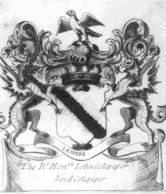
Sir Richard Culpeper
of
Oxen Hoath
(c. 1428 - 4 October 1484)
Richard was Lord of the manor in Oxenheath, West. He was also Sheriff of Kent during the reign of Edward IV; (1471-2).
Sir Richard married firstly Sybil (?) by whom he had three daughters. He married Isabel Worsley as his second wife c. 1479.
Father of Jocasa Culpeper
| 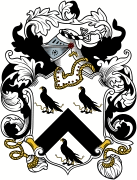
Isabel Worsley
(c. 1460 - 18 April 1527)
The Worsley's were a prominent family of Lancashire.
Mother of Jocasa Culpeper
|
Lord Edmund Howard
of Flodden Field
(between 1472/1497 - 19 March 1539)
Lord Edmund Howard was born between 1472 and 1497 and died 19 March 1539. He was the third son of Thomas Howard, 2nd Duke of Norfolk and Elizabeth Tilney. He spent his youth hanging about the Court and in 1509 was listed as one of the nobles who organised the jousts for the joint coronation of Henry VIII of England and his new wife, Queen Katherine of Aragon. Although his brother Edward was a close friend of the King's and his brother Thomas became a dominating figure at court, Edmund seems not to have shared the King's favour and seems to have been considered ineffectual.Edmund certainly considered the family as holding him back.Antonia Fraser, in her book makes it quite clear that he was inhibited by his aristocratic birth from making the efforts suitable to those of a lesser degree. She went on to quote him as saying, "If I were a poor man's son, I might dig and delve for my living". His eldest son Henry Howard (eldest brother to Katherine) on the death of Katherine Howard disappeared into the Norfolk countryside near the Suffolk border with family and spent the rest of his life living the simple life. Therefore making Antonia Fraser and others wonder if the thoughts of Edmund were an influence on his son, Henry. In 1531 his niece, Anne Boleyn, helped him find a position as Controller of Calais. Howard's first marriage was to Jocasa Culpeper with whom he had about six or seven children, one of which was Katherine Howard, the fifth queen of Henry VIII of England. When his wife died in the late 1520s he went on to marry two other wives, both widows, by whom he was childless. He was dismissed from his post in Calais, early in 1539 and died shortly afterwards, a year before his daughter became queen of England. His son, Charles went on to arrange a secret marriage to Margaret Douglas, the King's niece, earning him time in the Tower of London.
| Jocasa "Joyce" Culpeper
of Oxen Hoath
(c. 1480 - 1531)
Joyce was born in Oxon Hoath, Hadlow, Kent, the first child of Sir Richard Culpeper of Oxon Hoath and his second wife Isabel Worsley. She had a younger sister called Margaret (c.1481) and a younger brother Thomas (1484 -1492). Through her father's first marriage she also had three step-sisters; Elizabeth, Margaret, and Anna. Her father died in 1484 and her mother married again to John Legh of Stockwell. Joyce was also the sister-in-law of Elizabeth Howard, Lady Boleyn and aunt by marriage of Anne Boleyn, Mary Boleyn, and George Boleyn.
In 1496, she first married Ralph Leigh, Esq., Lord of the manor of Stockwell in Lambeth, Surrey and together they had five children. The Leighs were a prominent family originally from Cheshire, England. Leigh was also Under Sheriff of London. From Joyce's first marriage came Isabel Leigh, born abt. 1495, who married Sir Edward Baynton, one of the largest landowners in Wiltshire. Their son Henry Baynton married Anne Cavendish, whose father, Sir William, was the ancestor of the Cavendish family, Dukes of Devonshire. This was through his marriage to Bess of Hardwick. Henry Baynton and Anne Cavendish had four sons, the fourth of which, Ferdinand born 1566, married Jane Weare and produced Anne Baynton, born 1602. Anne Baynton married Christopher Batt, gent., of Wiltshire and they emigrated to Massachusetts in 1638, where he became a prominent merchant in Boston. From them came many New England descendants. Ralph died in c.1509/10, and sometime between c.1513-1515 she married Lord Edmund Howard and together they had 6 or 7 children.
Their daughter, Margaret, married Sir Thomas Arundell, son of Sir John Arundell and Lady Eleanor Grey; Mary Howard married Sir Edmund Trafford; and one of their sons, Charles Howard, was known for his misalliance with the King's niece, Margaret Douglas, the daughter of Henry's sister, Margaret Tudor, Queen dowager of Scotland.
|
|
|
|
